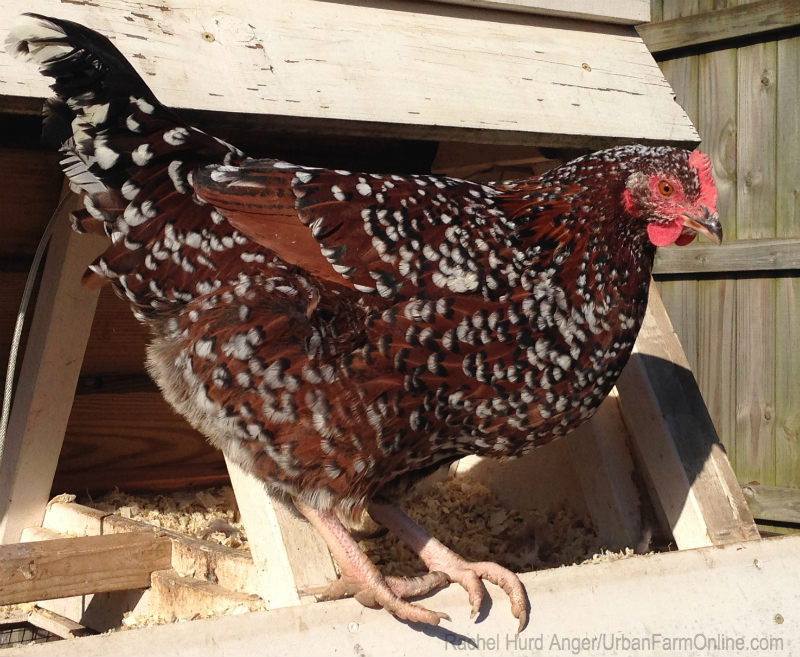
Cleaning the chicken coop is one of my least favorite chores. The distain I feel encompasses all of life’s chores, not just chicken ones. I think we can all agree that chicken poop is pretty gross. Ideally, we should visit the coop every day with intention beyond gathering eggs—to remove the dirtiest bedding and replace it with a bit of fresh bedding.
This time of year, it’s especially easy to neglect the coop if the hens have stopped laying eggs for the winter season. Now that the days are nearly at their shortest, chickens spend up to 15 dark hours per day inside the coop, depending on your location. When temperatures are very cold during daylight hours, their time in the coop can be nearly 24 hours.
In my early days as a chicken keeper, I didn’t have a quick and effective way to clean out my coop. Each week I would put on my rubber chicken gloves and remove bedding handful by handful into a wheelbarrow. The work was somewhat cathartic, but I craved more distance between my hands and the poo.

One day, my kitchen broom broke, and when I brought another home from the store, the extra dustpan became my new chicken coop scoop. I couldn’t believe I hadn’t thought of it before!
While I still don the gloves, scooping out all the dirty bedding once a week takes just a few minutes. All that slows me down now is the chickens’ interest in my busyness.
Curious Helpers
Chickens are very curious animals. Like me, they get bored when everything is the same. When something new happens, they want to be right in the thick of it. Clucking and gossiping amongst themselves, they usually follow whoever is their leader. My Speckled Sussex tends to lead the pullets, while my older girls follow the Australorp, that is, if they can be troubled. The elderly hens are much less likely to do what the others are doing.
In the video, you can see the excitement I created by removing the old bedding. Once I put in clean bedding, the side door has to be put back on immediately or else they’ll kick most of it back out.
Upkeep Vs. Deep Cleaning
You can also see that my coop is due for a deep cleaning (and a paint job), but I’m holding out for the 52-degree day forecasted for Sunday. I don’t scrub the coop out as often as I should, but I do put in more effort in keeping the bedding clean. In my coop, I use small, soft Poplar shavings, sourced regionally in my state. Because I have a mobile ark coop, I can’t simply rake out dirty bedding, which is why I use wood shavings. Straw is difficult to remove with my handy dustpan.
Why Not Go Deep?
The deep-litter bedding method is popular during the winter months for many chicken keepers, but my coop isn’t deep enough to attempt it. It’s not a maintenance-free method, either. While the method generates heat inside the coop as manure and bedding break down, it’s not without risks.
If you raise any heavy breeds, like the Wyandotte, these breeds are more susceptible to foot injuries because of their weight. The deep-litter method harbors bacteria, so an injured bird can develop Bumblefoot if the bedding isn’t properly maintained. Keep that in mind when determining what kind of bedding and methods are right for your particular flock and coop.
What are your tricks for cleaning your chicken coop? Do your chickens love your attention to the coop like mine do? Let me know in the comments below.
Read more of Chicken Quarters »




